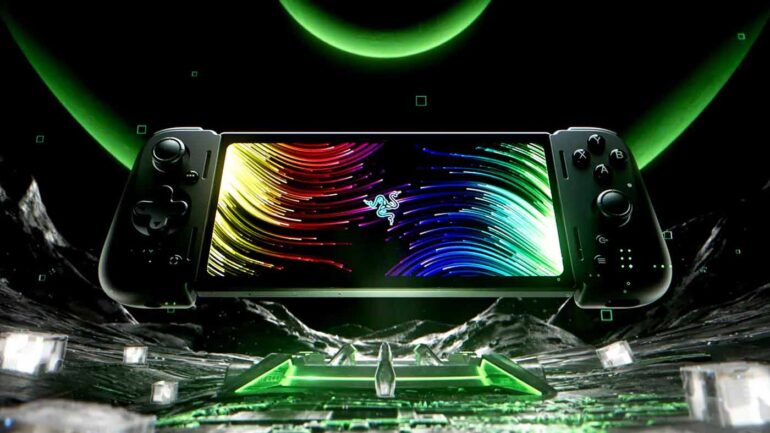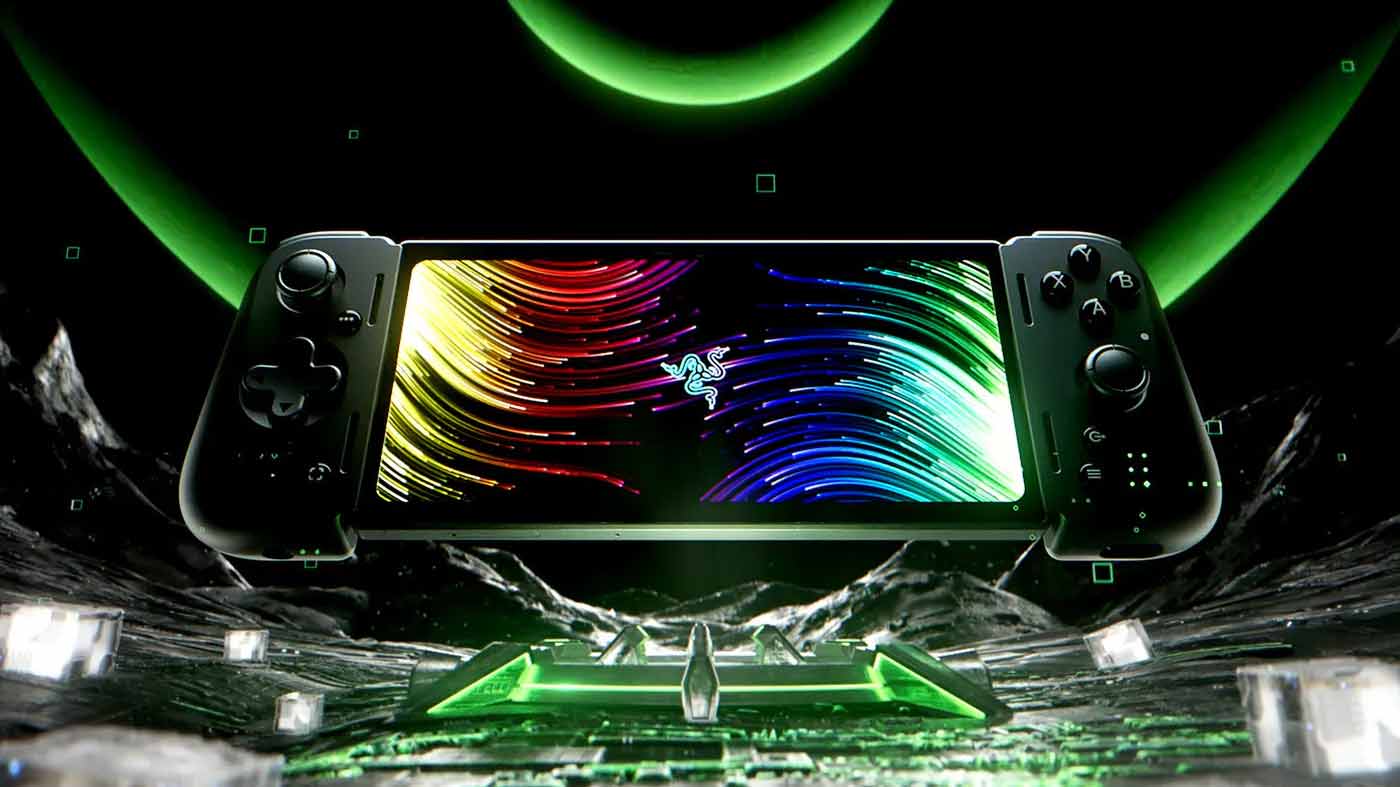It feels like recent years have seen the most diverse and eclectic landscape of dedicated gaming handhelds since everyone tried and failed to go after Nintendo and its Game Boy (I loved my Game Gear, for what it’s worth), only now the stakes are higher than ever with devices packing hardware capable of offering gaming experiences that are genuinely comparable to a modest home console or PC. But at the same time as some tech vendors are squeezing more and more raw performance out of tiny chips, others are honing their ability to serve up increasingly-convincing facsimiles of a real-time gaming experience by rendering high-end visuals offsite and beaming them to more passive devices.
Cloud gaming is undoubtedly one of the last bastions of gadgets like the Razer Edge, which immediately acquits itself of the grueling tech race being run by the likes of Valve, ASUS, Lenovo or AYANEO, by virtue of sticking with a traditionally-mobile ecosystem. It’s a thin, sleek rectangle that sports a Snapdragon G3X Gen 1 chipset and runs on Android, making it closer to a gaming phone or tablet than a Steam Deck, but it’s been paired with a version of Razer’s Kishi controller attachments in a way that begs comparison nonetheless. It suits a very specific use case that could’ve had a more broad appeal were it not for some unfortunate barriers – including the operating system it relies on.
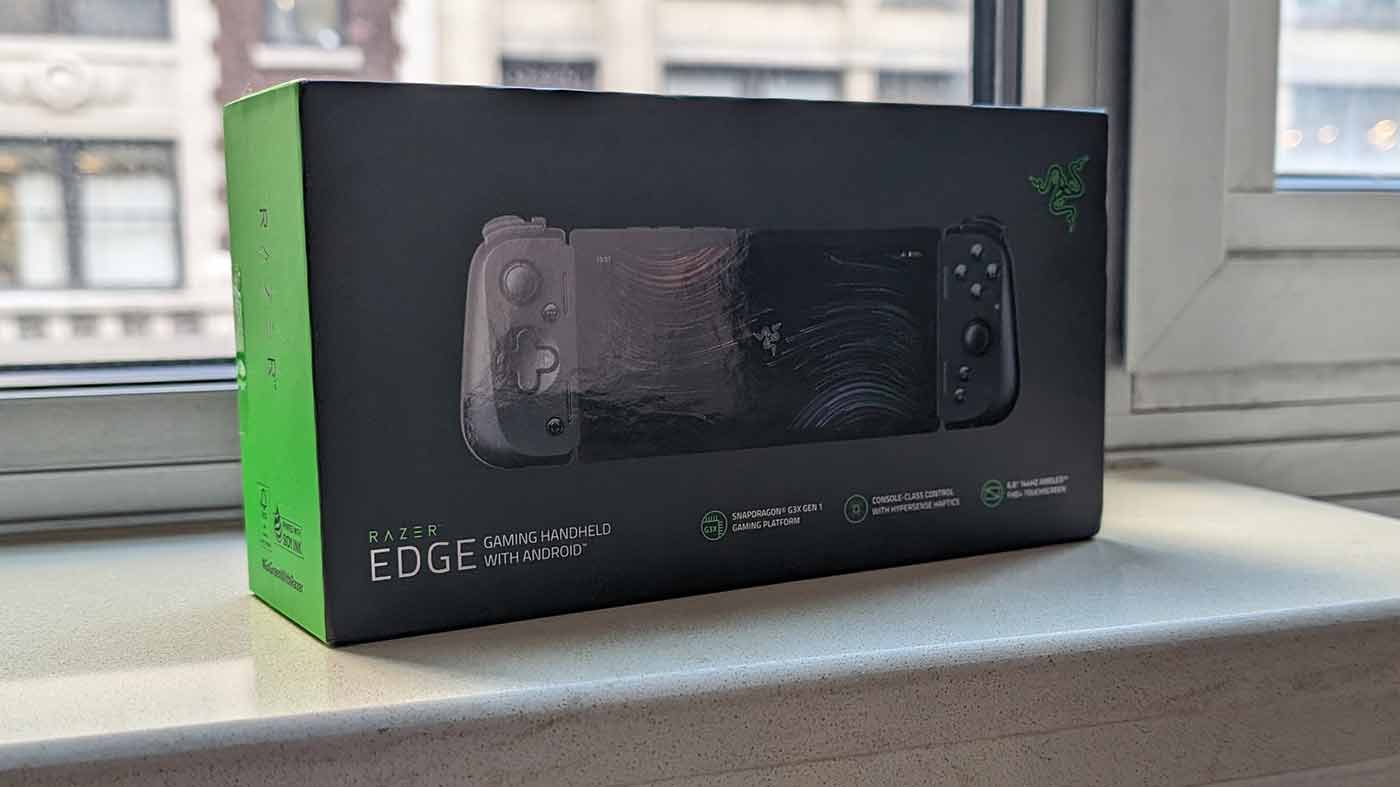
Let’s start at the beginning though, shall we? Unboxing the Edge proves to be an endeavor typical of just about any Razer device – lifting the thing free of its black-and-green prison reveals a smattering of inclusions in the box from the unit itself to a USB-C charging cable and leaflets but it’s quite minimal overall. The Edge itself, at least the brains and the display part, is actually just a small slab of an Android tablet. On its own it’s incredibly basic-looking with nothing to adorn it save the power and volume buttons, a SIM card slot and some fan grilles on the back.
See, rather than offer up an all-enclosed device like the Logitech G Cloud or even the recently-released PlayStation Portal, a big point-of-difference in the Edge is that it comes in two parts with the second half of the equation being a version of Razer’s existing Kishi V2 Pro mobile gaming controller included in the box. That seemed weird at first, but I guess there are enough reasons that might be useful to some to justify it. At the very least it makes it easier to chuck in a small bag or even split it between pockets if you’re still rocking cargo shorts in 2023. Probably with a chain wallet and an MP3 player in the others. Options are always a good thing though, and the Edge doesn’t feel unstable or awkward as a result of coming in two pieces.
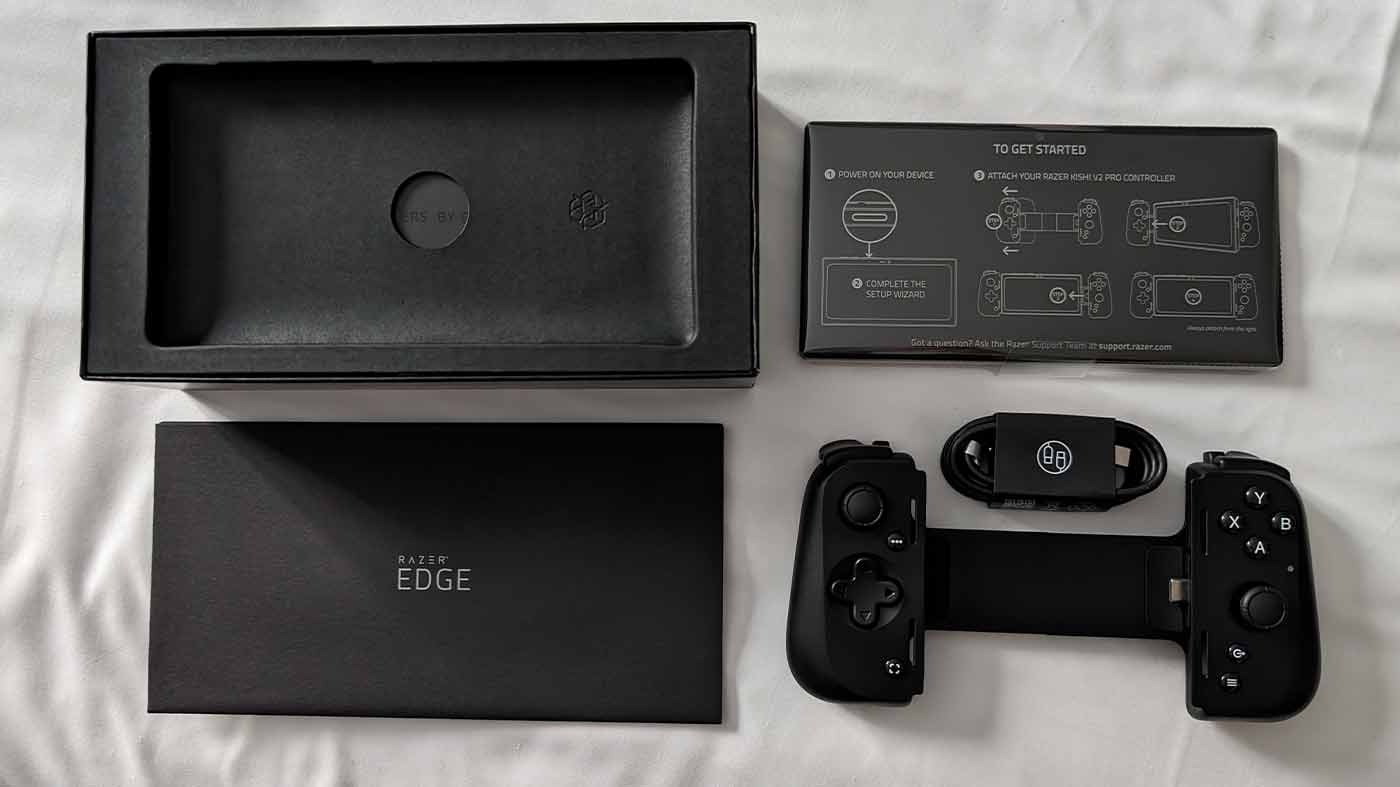
In fact, the Kishi controller is a big advantage here because it’s super comfortable with nicely clicky and responsive buttons, even if the layout and especially the joysticks are on the smaller side. It’s served me well in very action-heavy games like Fortnite, The Division: Resurgence and Genshin Impact. I even managed a solo dub in Epic’s mammoth battle royale which is, well, unlike me. The Kishi is ubiquitous enough as well that most games support it nicely, although frustratingly the official PlayStation Remote Play app doesn’t, meaning you’ll have to turn to a paid third-party alternative if you want to use this to remotely access your PS5 games. The Razer Nexus app actually offers an ingenious Virtual Controller Mode that lets you assign your Kishi’s buttons to parts of the screen for games that don’t support a controller at all, but it’s definitely not the ideal way to use PS5 Remote Play.
It’s tough to say too much about the Razer Edge without addressing one critical concern, and that is if you already have an Android device like a phone or tablet, especially a modern one with decent performance, there’s not much this thing can do differently or better. The best selling point it has is obviously being a standalone device that you can dedicate to high-quality games or as an all-in-one portable emulation machine with a nice big display, but $889.95 is a fair bit of cash to splash on those limited use cases when there are so many other ways to access those things. In my case I’ve found myself picking it up around the house quite a bit to smash out 30-60 minutes of something here and there, but if I was going away and had to choose between taking the Razer Edge or my Switch, I’d go the latter knowing my Pixel 8 Pro easily picks up the slack.
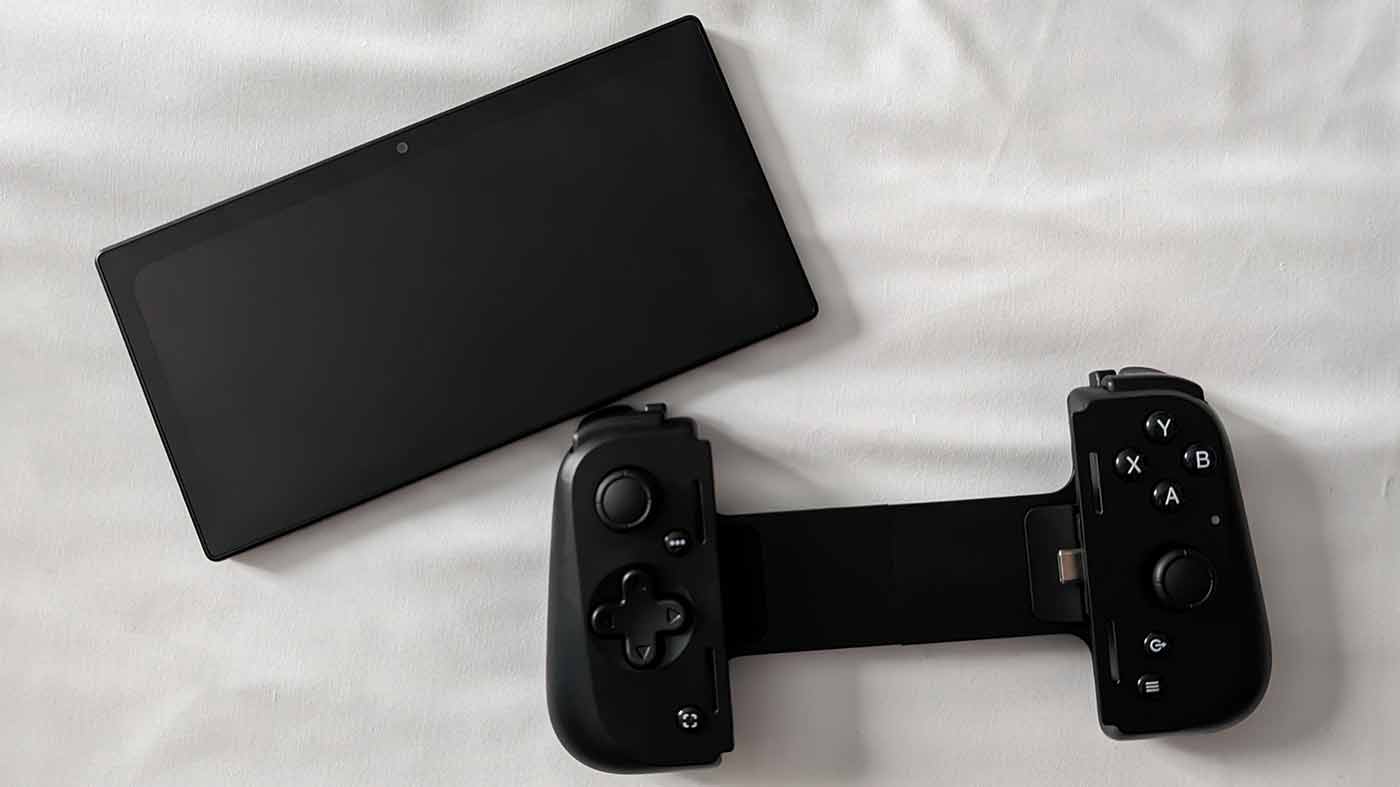
The Razer Edge being an Android device also means it struggles to shake its hidden identity as a tablet in gaming handheld’s clothing. The moment-to-moment UI experience is a constant reminder of that, especially when it attempts to go to a vertical layout and you’re stuck holding it sideways while you do whatever needs to be done. There would probably be just as many shortcomings had Razer opted for a more custom OS experience rather than just plonking its own app ecosystem on an otherwise stock Android 12, and all of the awkward controller-based navigation and constant fighting of the screen orientation are symptoms of Google’s software rather than anything Razer has done wrong, but the experience is hampered nonetheless.
Speaking of the screen, the 6.8″ AMOLED screen on the Edge is wonderful to look at, vibrant and sporting a 2400×1080 resolution at up to 144Hz. The overall shape of the device including the Kishi attachment has seemingly necessitated a much wider aspect ratio than most non-mobile games support but that’s quickly forgotten. What’s more noticeable is the rather severe rounding of the corners of the display, which is noticeable when you’re playing something in full 20:9 and doesn’t really serve a purpose other than eating into some screen real estate – it’s hard to fathom why it was designed that way.
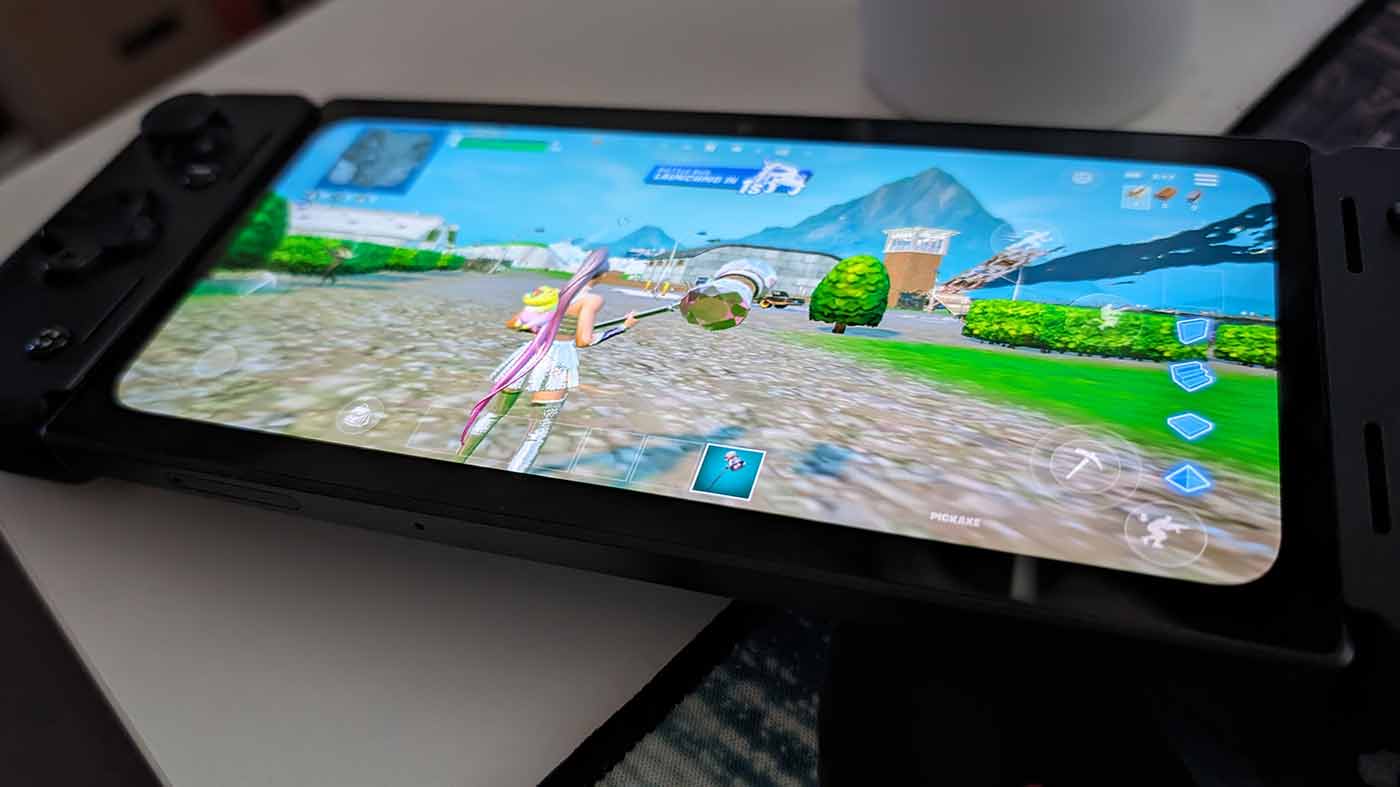
Powering that display is a decent little performer of a device with its Snapdragon G3X Gen 1 chipset that’s built on an Adreno 660 GPU and 3Ghz Kryo CPU with an active cooling solution, giving it some serious grunt. It had no trouble running native games like Fortnite at 60fps with decent visuals, and a very performant Wi-Fi chip meant me cloud-based gaming had minimal latency or artifacting. Battery life is also pretty good by virtue of its use case being so narrow and thanks to a 5000 mAh battery. I tend to get around four to five hours of native gaming out of it at the higher end of brightness and with the surprisingly decent built-in speakers pumping. You’ll want the volume up or headphones on for the most intense gaming as the fans do kick into full gear at times, but it’s something I only ever noticed when there was no other sound going.
The Edge’s performance profile also means it’s a great little emulation machine, though if playing anything that could inarguably be classified as “retro” is your main focus you’re probably safe to go with a cheaper, less-powerful option like the AYANEO Pocket Air. The advantage here is, of course, the ability to go even more modern as well as the flexibility to also boot up high-end Android games and cloud gaming apps – plus 128GB of on-board storage with the flexibility to add more via MicroSD. Anyone specifically in the market for a device that does all three of these things, does them well, and little else would absolutely be making a good choice on the Razer Edge.
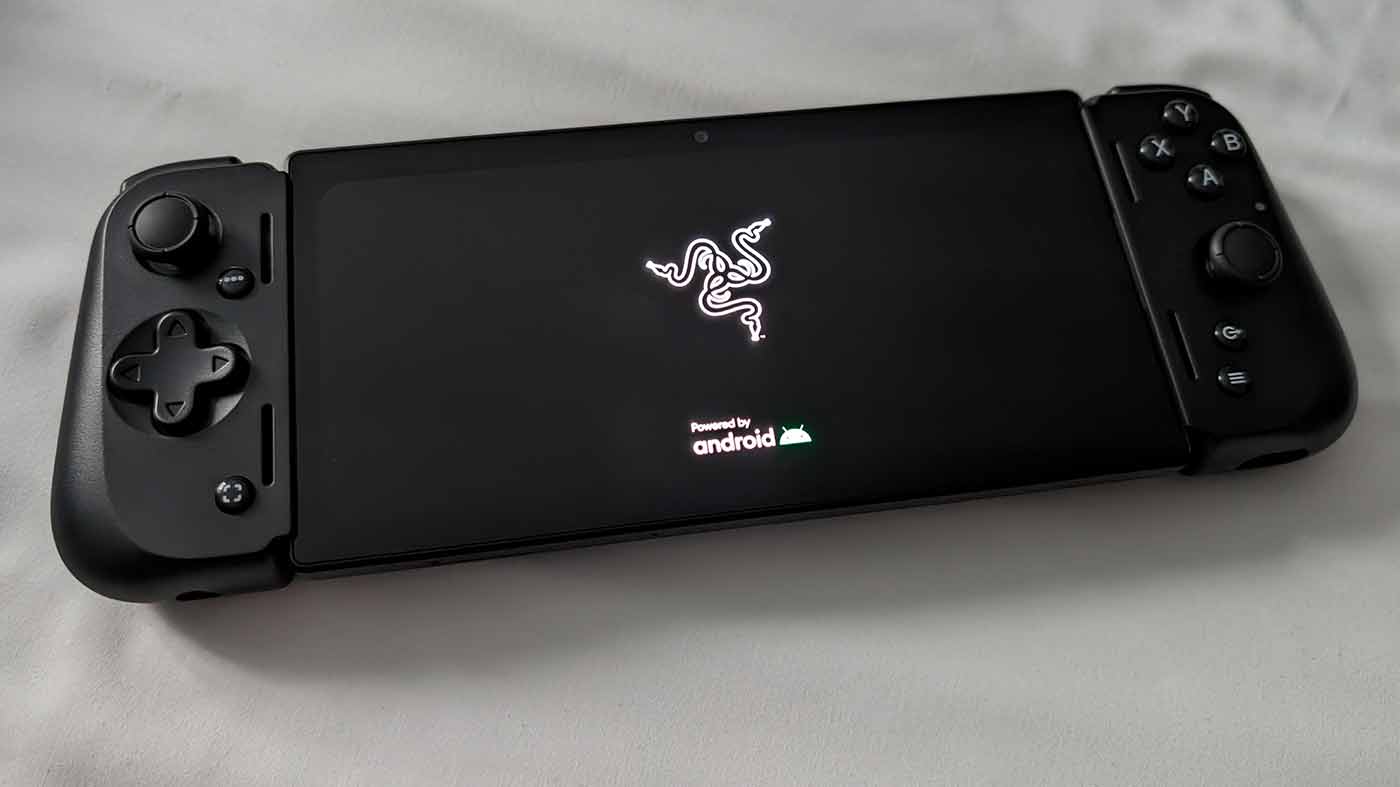
Though nearly every step forward is swiftly countered by an equal one back, the Razer Edge is still a good little device overall. Certainly if you were to use the way God and Razer intended – picking it up, opening the Razer Nexus app and booting into your favourite Android game, cloud streaming service or legally-murky emulator it offers a powerful and comfortable experience. The Nexus app is deceptively basic but does a pretty good job of automatically picking up anything you have installed or can access as far as games go and appropriately organising them, as well as offering a nifty Virtual Controller Mode that can really enhance some touchscreen-only Android apps.


